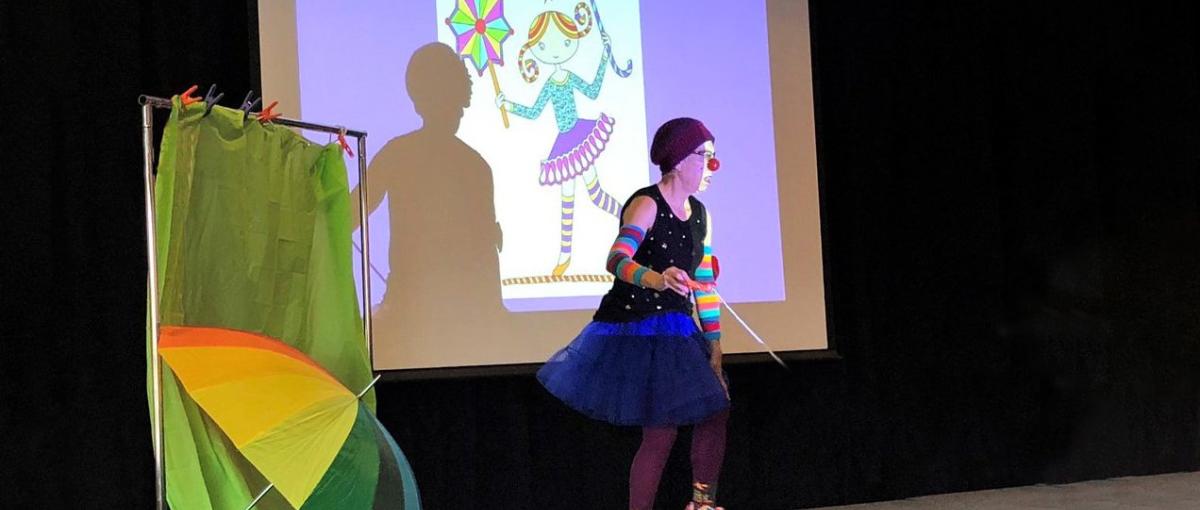How to prevent burnout
Front-line staff learn ways to manage stress

September 25, 2019
By Brenton Driedger, Social Media and Storytelling Advisor, Covenant Health
More than your job
In Sue’s experience with burnout, she noticed normally civil people become more easily frustrated, skip meals and not hydrate properly. Some even think about leaving their profession, something Sue seriously considered—twice.
She recalls lacking the energy to learn more about who a patient was and instead was just gathering the necessary medical details. “You feel emotionally and perhaps physically exhausted, and you just have nothing left to give.”
Sue decided to reduce her hours, give up her night shifts and explore pursuits outside of work, like travelling. And then she discovered clowning, giving her a creative outlet.
“It reminds you that there is a world outside medicine, that you are not your job.”
Tania says burnout is linked to environmental and personal factors. Employees can be at risk for burnout in workplaces that affect their sense of control or effectiveness, perhaps if there is a lack of communication or a system that’s bringing in rule changes. And individuals with a perfectionistic drive are more prone to burn out.
Often people will do their best to survive amid the environmental and personal pressures, and they might be successful for weeks, months or even years.
“But then as soon as there’s another trigger, something else that’s collapsing, what I often find is that people are pushing away their feelings and trying to cope and cope and cope until they snap,” says Tania.
Pam Kelly knows the feeling. She’s worked as a critical care nurse since 2004. In 2012, after her 13-month-old son experienced a grand mal seizure, she felt something change.
“I was frustrated and angry,” says Pam, Registered Nurse in the Intensive Care unit at Grey Nuns. “I was able to identify that I needed to step back a little bit further because I felt that anxiety.”
Take time for yourself
Pam scaled back her hours and chose to work half-time so she could spend more time with her young son. She found it helpful to take walks in the park, connecting with nature, sitting next to the pond.
A more recent form of self-care also involves water: she joined an aquafit class.
“It is so fun. I get in there and I’m splashing away and I’m playing in the deep water,” says Pam. “It’s been so good for my mental health. I feel more well-rounded, I feel more alive, I feel happy.”
Tania says preventing burnout starts with being aware of your own warning signs, whether it’s dreading a part of your job you used to enjoy or noticing self-destructive behaviour like increased alcohol use or even gossip. She recommends setting boundaries such as getting enough sleep or choosing to leave work at work. She also suggests finding a creative hobby or setting aside time for practices like journalling, colouring, doing Sudoku or mindfulness.
“It doesn’t have to be big things; just taking a mini-break helps. It doesn’t fix all the problems in my world, but now I actually feel restored enough that I can take on the rest of this day.”
Clowning fills that need for Sue. She’s always liked theatre and enjoys exploring play, discovering parts of herself she didn’t know. It’s also been a non-threatening way to start serious conversations about the need to find balance and prevent burnout, in a way that’s memorable for her audience.
“As a stress reliever, laughing is a wonderful way to connect with people,” says Sue. “Laughter is very therapeutic, and (the message) will stick in people’s minds.”
“It’s almost impossible to do those jobs well without caring. So there’s this immediate emotional drain that’s happening. Even if there’s a reward coming back, the reward might not always keep up with the emotional ex
Sue Reid stands before an audience of medical colleagues. But this is clearly not your typical presentation by a physician. Instead of medical garb, she’s wearing a red nose, colourful leg warmers, silly shoes and a crimson heart with sequins on her sleeve.
Meet Sue’s clown persona known as Iris. Part of her show sees her demonstrating how to walk the tightrope of balance, which connects to the performance’s purpose. The act is part of Sue’s presentation on her experiences with burnout. She describes burnout as feeling emotionally exhausted and unable to put in any extra effort, when her career becomes just a job.
“I know I’m burned out when I’m not connecting with my patients,” says Sue, an Anesthesiologist at Grey Nuns Community Hospital. “I’ll do what’s necessary, but I’ll have no energy to do the rest.”
Clowning is one way Sue copes with the pressures of a stressful career. And she’s got plenty of company when it comes to dealing with career pressures. In a recent Gallup study, 23 per cent of full-time employees reported feeling burned out at work very often or always. Three in 10 Canadian physicians report high levels of burnout, according to the Canadian Medical Association.
The World Health Organization recently defined burnout as an “occupational phenomenon” that results from “chronic workplace stress that has not been successfully managed.” It describes burnout as feelings of energy depletion or exhaustion, increased mental distance from one’s job or feelings of negativism or cynicism related to one’s job, and reduced professional efficacy.
“Burnout can look like different things to different people,” says Tania Oommen, Psychiatrist at Grey Nuns Community Hospital. She says symptoms can be emotional, cognitive and physical, from apathy and irritation to a lack of drive or inability to concentrate, to a deep fatigue. People experiencing burnout may also be more likely to get sick or develop headaches.
Tania says jobs that require a large emotional investment—like front-line roles in health care, social work or education—come with a greater risk.